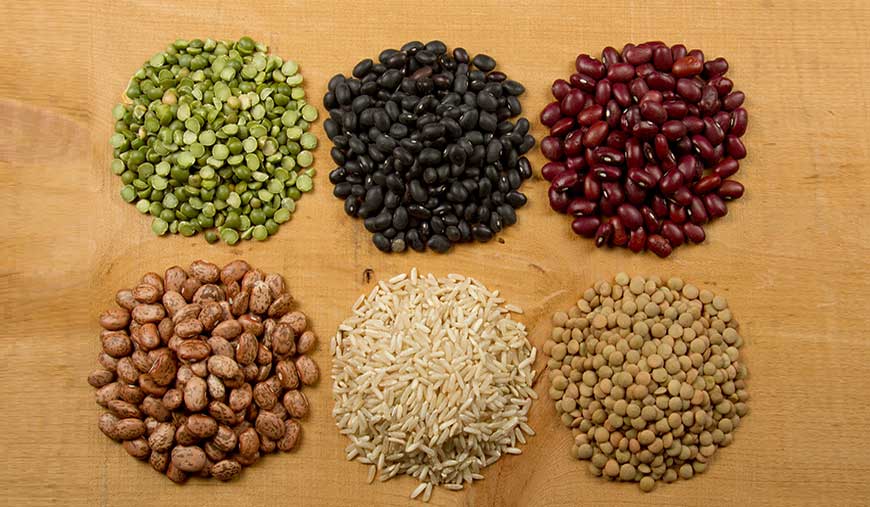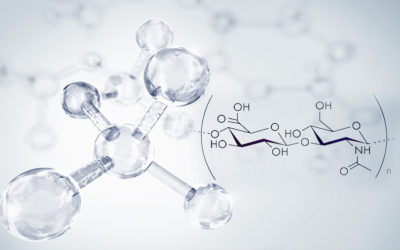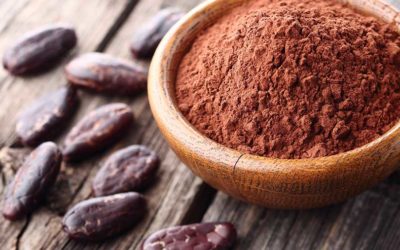Inositol is a 6 carbon atoms cyclic polyalcohol. It was isolated for the first time from animal muscle by J.J. Scherer in 1850. Inositol is found in many foods, particularly in cereals, nuts, fruits, especially melons and oranges, It is not considered a vitamin because it can be synthesized by the organism. It exists in 9 possible forms ( three of which are not represented in nature: epi-, cis- and allo- inositol). The most represented in plant and animal worlds is the myo-inositol.
Other natural stereoisomers (represented in small quantities) are identified by the prefix scyllo-, muco-, neo- and D-chiro-inositol. The conversion between myo-inositol and D-chiro-inositol is mediated, in mammalian tissues, by a specific enzyme named epimerase.
Myo-inositol and D-chiro-inositol show extraordinary functional and biological differencies.
MYO-INOSITOL
Myo-inositol is naturally present in the human body being a cell membranes component. It plays an essential role as a second messenger of various hormones such as insulin, FSH (follicle-stimulating hormone), TSH (thyroid-stimulating hormone). It is known as a deficiency results in alterations in the response to these hormones. It controls the metabolism of fat and sugar and also regulates nervous system cellular functions.
USE
POLYCYSTIC OVARY SYNDROME
Polycystic ovary syndrome or ovarian polycystosis (PCOS) strikes about 10% of women in their reproductive years. It is a multifactorial disease characterized by metabolic changes and alterations of the ovarian functionality. The first ones manifest themselves with clinical signs (acne, hirsutism and alopecia) and biochemical signs (increase of testosterone in the blood) of hyperandrogenism and in 50-70 % of cases insulin resistance, defined as the inability of the cell to use glucose which is followed by hyperinsulinaemia and type 2 diabetes mellitus. On the other hand, PCOS is characterized by ovarian function alterations with disorders of the menstrual cycle (oligo/anovulation and infertility) and reduced oocyte quality.
The diagnosis is defined by the presence of at least 2 of the 3 following requirements:
1. Oligo or anovulation
2. Hyperandrogenism clinical and biological signs
3. Polycystic ovary (characterized by the presence of 12 or more follicles with a diameter between 2 and 9 mm and/or a 10mm ovarian volume).
Several scientific studies support the use of myo-inositol to improve metabolic alterations due to this disease (clinical signs of hyperandrogenism, insulin resistance) and ovarian function alterations restoring and regulating the menstrual cycle and the ovulation.
Another stereoisomer of inositol is D-chiro-inositol ( DCI ), which is also involved in the transduction of the message induced by insulin, and in particular is useful infact for glycogen synthesis. In the body DCI is synthesized from myo-inositol by means of an insulin-dependent enzyme. Myo-inositol and D-chiro-inositol play different roles in the body. The relationship between the two is basic for the correct functioning of organs and tissues.
The largest DCI concentrations are found in the tissues appointed to the synthesis and storage of glycogen: liver, muscles and adipose tissue.
Extremely low concentrations of D-chiro-inositol are found in tissues that consume high levels of glucose: heart, brain, ovary. There are exactly complementary concentrations of myo-inositol.
In order to maintain a ratio of the two at a plasma physiological level, the D-chiro-inositol supplementation has to take place simultaneously with the myo–inositol administration. In healthy subjects, the ratio of the myo-inositol and D-chiro-inositol is of 40 parts of myo-inositol and 1 part of D-chiro-inositol. Scientific studies have shown that in patients with insulin resistance (found in conditions such as PCO, diabetes and obesity), combined supplementation of Myo-inositol and D-chiro-inositol in the appropriate ratio (40:1) contributes to the metabolic and hormonal profile control.
FERTILITY
FEMALE FERTILITY
Woman’s age is one of the main limits to human fertility. After 35 years old there is a decline in fertility that reflects a decrease in oocyte quality. The latter is in fact also the main cause of failure of medically-assisted fertilisation. Every year there are 1.5 million cycles in the world, but only 350,000 end with the birth of a child.
Reduced oocyte quality is correlated with a reduced embryo quality and hence with a reduced chance of pregnancy.
Clinical data shows that high levels of myo-inositol are a good index of follicular oocyte and embryo quality. In fact, myo-inositol supplementation determines an improvement of the parameters monitored during in vitro fertilization cycles (hormonal units used, embryos quality, etc.) increasing the chances of pregnancy.
MALE FERTILITY
Half of the causes of couples infertility is to be found in male.
It is estimated that 1 out of 3 male of all ages are at risk of infertility or sexual dysfunction.
The male reproductive health is taken into account only when problems become glaring, often with a delay that obstacles medical effectiveness. There are different causes: pathologies related to male reproductive system (varicocele, cryptorchidism), bacterial infections, hormonal insufficiency, genetic abnormalities.
Alterations in semen are classified as:
– Oligospermia or oligozoospermia: sperm concentration (number per milliliter of semen) below the limits defined by the World Health Organisation (WHO);
– Azoospermia: absence of sperm in the semen;
– Asthenospermia or asthenozoospermia: motility lower than the reference values (WHO);
– Teratospermia o teratozoospermia: sperm with less reference values morphology;
– Oligoasthenoteratospermia: changes related to concentration, motility and shape.
MENOPAUSE
Myo-inositol is produced in the testicles, and it is absent in some diseases such as cryptorchidism. It is present in seminal plasma, and its concentration increases from the testicles through sperm ducts. It is essential for sperm maturation and motility and its deficiency is also related with a low sperm count. Myo-inositol also stabilizes cytoskeleton proteins, which are basic for motility. Several studies show that treatment with myo-inositol improves sperm shape, number and motility.
HASHIMOTO’S THYROIDITIS AND SUBCLINICAL HYPOTHYROIDISM
Myo-inositol is naturally present in the human body as a component of cell membranes. It plays a basic role as a second messenger of various hormones such as insulin, FSH (follicle stimulating hormone), TSH ( thyroid stimulating hormone). It is known that a myo-inositol deficiency determines alterations in the response to these hormones. It controls fat and sugar metabolism and it also regulates nervous system cellular functions.
HASHIMOTO’S THYROIDITIS AND SUBCLINICAL HYPOTHYROIDISM
Scientific studies show the involvement of myo-inositol in the thyroid, in regulating the formation of T3 and T4 hormones (organification) produced by the thyroid, mediating signals from the TSH, thyroid-stimulating hormone. According to the American Thyroid Association, the TSH physiological values (index of normal thyroid function) are between 0.5 and 2.5 mIU/L.
Levels between 2.5 and 5.0 mIU/L show instead a suffering thyroid and then a not optimal function. Through different processes, TSH values are altered in two conditions such as:
– Hashimoto’s thyroiditis, chronic autoimmune inflammation of the thyroid, characterized by the presence of positive autoantibodies for two proteins involved in the formation of thyroid hormones, thyroid peroxidase (AbTPO ) and/or thyroglobulin (abTG);
– subclinical hypothyroidism, condition characterized by thyroid intolerance with TSH between 2.5 and 5.0 mIU/L.
In the first case, the presence of autoantibodies takes to a thyroid damage that reduces thyroid cells efficiency (thyrocytes) produce T3 and T4 hormones, resulting in a progressive increase of TSH. In subclinical hypothyroidism case instead TSH values gradually increase to the range from 2.5 to 5.0 mIU/L. As time passes, both clinical presentations may progress to an hypothyroidism and should be treated with hormone replacement therapy. The disease evolution occurs in a wide window of time (about 20 years) during which the thyroid function can be assisted from damage caused by antibodies and/or stress due to hyperstimulation induced by TSH high levels. Clinical studies have shown that myo-inositol helps to normalize TSH levels.
Learn more about the disorders “subclinical” Thyroid “
BIBLIOGRAPHY
Sun TH, Heimark DB, et al. J.Biochem Biophys Res Commun 2002; 293:1092-8.
Minozzi M, Costantino D et al. Gynecol Endocrinol.2011;27(11):920-4.
Papaleo E et al. Gynecol Endocrinol.; 2008,Vol.24, Suppl.I.
Unfer V et al. Eur Rev Med Pharmacol Sci. 2011;15(4):452-7
Larner J. Int J Exp Diabetes Res. 2002;3(1):47-60.
Unfer V et al. Reproductive Sciences 2014:1-5.
Nordio M et al. Eur Rev Med Pharmacol Sci. 2012 May; 16(5):575-81.
Broekmans FJ et al. 2009, 30(5):465–93.
Van Loendersloot LL et al. Hum Reprod Update. 2010,16(6):577-89.
Chiu TTY et al. Human Reproduction. 2002. 17(6): 1591-96.
Lisi et al. Reproductive Biology and Endocrinology. 2012, 10: 52.
Rolland M et al. Hum Reprod. 2012.
Morris RN et al. J Reprod Fertil. 1971;27(2):201-10.
Robinson R et al. Can J Biochem. 1979;57(6):962-7.
Hinton BT, et al. J Reprod Fertil. 1980;58(2):395-9.
Colone M, et al. Eur Rev Med Pharmacol Sci. 2010;14(10):891-6.
Condorelli RA, et alUrology. 2012;79(6):1290-5.
Helmut G et al. J Clin Endocrinol Metab. 2007;92(7):2816-20.
Maurizio Nordio and Raffaella Pajalich. J Thyroid Res 2013; 2013:424163
Insights
Hyaluronic acid
The hyaluronic acid is a glycosaminoglycan (GAG) consisting of the repetition of disaccharide units of d-glucuronic acid and N-acetyl-D-glucosamine. It represents the main component of the...
Cocoa polyphenols
Cocoa polyphenols are natural substances present in the cocoa powder obtained by the working of the Theobroma Cacao tree. Cocoa polyphenols are compounds known since ancient times for their...
Melatonin and female fertility
What is Melatonin Melatonin or N-acetyl-5-methoxytryptamine is a naturallipophilic substance produced and secreted in our body mainly by the pineal gland (epiphysis). This gland is situated below...




